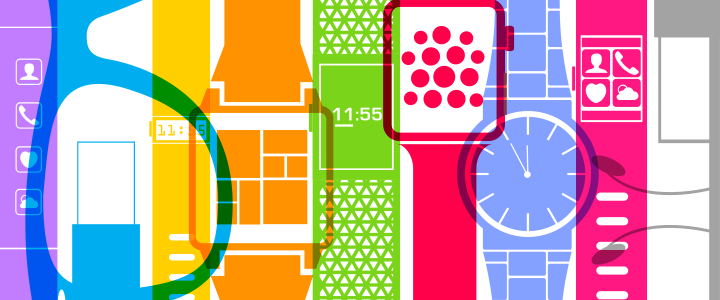Wearable Device Awareness in the Enterprise

BYOD Signaled the Start
The bring-your-own device (BYOD) movement demonstrated how consumer experiences and expectations can change the enterprise ecosystem as well as the culture of a workplace. It brought an array of benefits to both the employee and company while presenting obstacles and ongoing challenges for IT organizations.
Security and data management policies are just some of the considerations that have to be accounted for in order for BYOD to become a reality for the enterprise down to the end user. Yet, if there is one thing that is true, technology is evolving at a greater pace than ever before. With that, BYOD can be looked at as the starting pistol shot signaling more things to come.
Devices Are Getting (More) Personal
As devices improve with new capabilities and functionality, they grow closer to interpreting user interactions. They now anticipate behavioral actions through inputs and data collection:
Get into your car and it is likely that you will get a status of how traffic is. Arrive at your destination and you might be greeted with information about nearby venues or friends within distance. Little by little, the devices we carry are inching towards a level of intimacy that will soon transform them more deeply into personal assistants. They will know more about us on a behavioral level and be able to anticipate the things we may need, the information we seek and the communications we have.
In addition, the form factor is rapidly changing. BYOD, for the most part, concentrated on smartphones and tablets. Now, technology has advanced to a variety of smaller devices such as wearables. (Think: fitness trackers, watches and smart glasses).
From Personal Device to Personal Assistant
Wearables accentuate the intimate relationship that people have with their personal devices.
They act as conduits translating data into specific tasks, actionable events or assist with decision making. They work in sync with other devices as personal assistants, relaying information and updates that is both timely and relevant. As they progress in the consumer world, is there a place for them in the enterprise? In short, yes, but like BYOD it will require organizations to plan and consider how to best use this technology to benefit both the company and the employee. At a high level, wearables can help create experiences in the workplace that are engaging and interactive while being productive.
Pass by a particular conference room at work and you might get a project status on your watch. That colleague you passed just triggered a reminder about a meeting you have with her next week… are you ready? A wellness alert might appear on your device if you have been at your desk writing that RFP response for too long – thank your wearable. With the potential to improve communication, productivity and collaboration in the workplace, enterprises must consider how to accommodate for wearable technologies beyond device provisioning. They must look to find ways in which they can tap into that intimate relationship and enrich the employee experience.
In doing so, they will ultimately excite, engage and retain their workforce. At Logical Design Solutions, we are constantly evaluating and innovating with emerging technologies like wearables for enterprise use.
About this article
POSTED: April 8th, 2016
TAGS: emerging digital solutions, human-centered design, hyper-personalization, omni-channel, personal assistant, wearables
